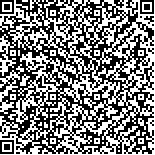章志超,熊键,刘金明,等.呼吸训练联合作业治疗对脑卒中患者上肢功能恢复的影响[J].中华物理医学与康复杂志,2022,44(2):121-125
扫码阅读全文

|
| 呼吸训练联合作业治疗对脑卒中患者上肢功能恢复的影响 |
|
| |
| DOI:10.3760/cma.j.issn.0254-1424.2022.02.005 |
| 中文关键词: 呼吸训练 作业治疗 上肢功能 脑卒中 临床疗效 |
| 英文关键词: Respiratory muscle training Occupational therapy Upper limb function Stroke Clinical efficacy |
| 基金项目:湖北省自然科学基金(2019CFC921) |
|
| 摘要点击次数: 5060 |
| 全文下载次数: 7069 |
| 中文摘要: |
| 目的 观察呼吸训练联合作业治疗对脑卒中患者上肢功能恢复的影响。 方法 采用随机数字表法将50例脑卒中患者分为观察组及对照组,每组25例。对照组患者给予常规康复干预(包括偏瘫肢体良肢位摆放、物理因子治疗及运功功能训练等),观察组患者在此基础上辅以呼吸训练(包括渐进性吸气肌抗阻训练和呼吸控制训练)及作业治疗,每天训练2次。于治疗前、治疗4周后分别采用躯干控制能力测试(TCT)、Berg平衡功能量表(BBS)、上肢Fugl-Meyer运动功能量表(FMA-UE)、上肢动作研究量表(ARAT)、改良Ashworth量表(MAS)及改良Barthel指数(MBI)量表评定患者核心稳定性、上肢功能及日常生活活动(ADL)能力改善情况。 结果 治疗前2组患者上述各项指标组间差异均无统计学意义(P>0.05);经4周治疗后,发现2组患者TCT、BBS、FMA-UE、ARAT、肩、肘关节MAS及MBI评分均较治疗前明显改善(P<0.05);并且观察组TCT[(73.55±14.16)分]、BBS[(53.28±7.86)分]、FMA-UE[(54.79±7.36)分]、ARAT[(31.86±5.77)分]、肩关节MAS[(1.12±0.46)分]、肘关节MAS[(1.26±0.72)分]及MBI[(70.43±11.26)分]评分亦显著优于对照组水平,组间差异均具有统计学意义(P<0.05)。 结论 呼吸训练联合作业治疗能显著提高脑卒中患者核心稳定性及上肢功能,改善患者ADL能力,该联合疗法值得临床推广、应用。 |
| 英文摘要: |
| Objective To observe the effect of combining respiratory muscle training with occupational therapy in rehabilitating the upper limb function of stroke survivors. Methods Fifty stroke survivors with upper limb dysfunction were randomly divided into an observation group and a control group, each of 25. Both groups were given routine rehabilitation treatment including proper positioning of the affected limb, physical therapy and motor function training. The observation group also received progressive resistance training of the inspiratory muscles and respiration control training combined with occupational therapy twice daily for 4 weeks. The trunk control test (TCT), Berg balance scale (BBS), Fugl-Meyer Upper Extremity Assessment (FMA-UE), Action Research Arm Test (ARAT), Modified Ashworth Scale (MAS) for the Hemiplegic Upper Limb and the Modified Barthel Index (MBI) were used to assess the core stability, balance, upper limb functioning, upper limb muscle tension and ability in the activities of daily living of all of the subjects. Results Before the treatment there were no significant differences in any of the indexes between the two groups. Afterward the average TCT, BBS, FMA-UE, ARAT, MAS and MBI scores of both groups had improved significantly, but the improvements were all significantly greater in the observation group. Conclusions Combining respiratory muscle training with occupational therapy can further improve the function of the upper limbs and daily living ability beyond what is observed with traditional rehabilitation therapy after a stroke. |
|
查看全文
查看/发表评论 下载PDF阅读器 |
| 关闭 |
|
|
|